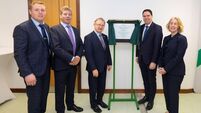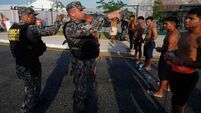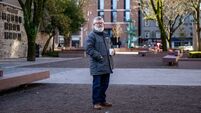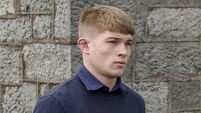Clodagh Finn: For peat’s sake, don’t turf out thousands of years of heritage

Excavation director Caitríona Moore and archaeologist Niall Jones lifting a block wheel from the base of a late Bronze Age trackway at Edercloon, Co Longford.
The beautifully manicured hands get me every time. The whorled patterns on his fingertips, a man who stood 6ft 6in in life, are so perfectly preserved that you feel a human instinct to touch one. Index finger to index finger, bridging over 2,000 years in the process.
That’s how it affects me anyway. Every time I see ‘Croghan Man’ at the National Museum in Dublin, I’m struck by the almost sacred fact that you can come so close to a person who lived in the Irish Iron Age (between 400BC and 200BC).
His remains were taken from the bog near Croghan Hill in Co Offaly in May 2003, giving us an unrivalled insight into life — or, more pertinently, his sacrificial death — some 2,000 years ago.
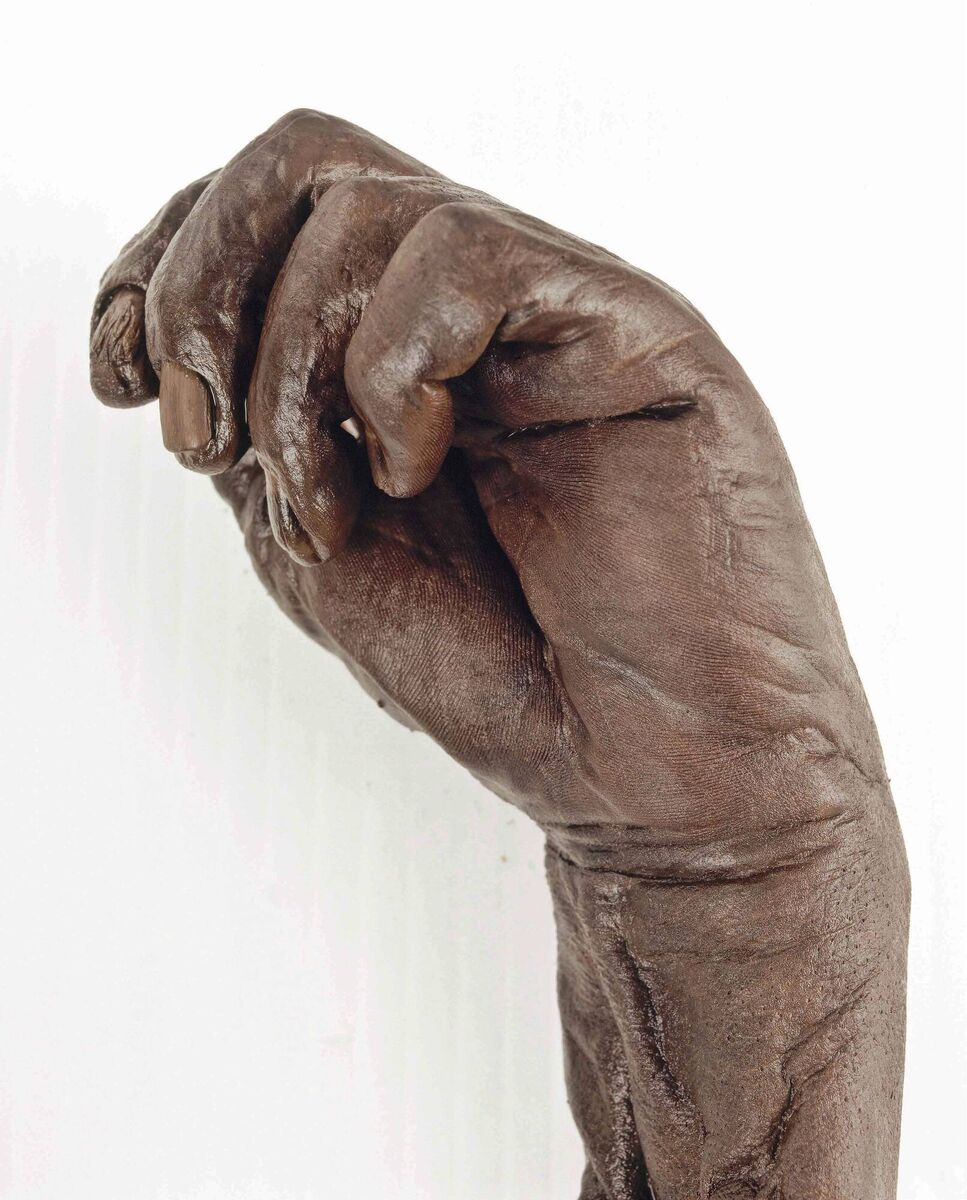
It is testimony to the rich archaeological heritage of Irish peatlands that, just three months before, another body was retrieved from a peat bog on the boundaries of Meath and Westmeath.
“They may well have known each other,” Eamonn Kelly, the then keeper of antiquities at the National Museum, speculated.
This man, however, was just 5ft 2in, but his hair was gelled up with a kind of resin made from pine trees found only in Spain and France, giving him extra height. That single fact blew me away.
The bog bodies, so sensitively displayed in the ‘Kingship and Sacrifice’ exhibition in the National Museum on Kildare St in Dublin, rightly attract a lot of attention, but they represent but a fraction of the wealth of archaeological artefacts rescued from Irish wetlands.
How wonderful, then, to hear that peatland archaeologist Caitríona Moore will deliver a keynote address at COP26 in Glasgow next week on Edercloon bog in Longford, where she and a team of more than 100 archaeologists revealed one of the most remarkable archaeological complexes ever excavated in Ireland’s wetlands.
The 48 sites, excavated over six months in 2006, revealed a vast network of wooden trackways at Edercloon — complete with an ancient “spaghetti junction”, as Moore describes it — ahead of the work on the N4 Dromod-Roosky Bypass.
She will tell a session at the UN Climate Change Conference that she and her team found evidence of activity from the Neolithic to the early medieval period, and discovered artefacts without parallel not only in Ireland but in Europe.
The discovery of a network of wooden trackways, or toghers, is on a scale not seen in Co Longford since the excavation by Barry Raftery of the Iron-Age Corlea trackway, built across the bog in 148BC. At Edercloon, however, the trackways didn’t simply cross the bog, but often formed routeways within it, suggesting that people wished to access and travel within the bog itself.
Archaeologists also found objects buried along the tracks in very structured ways. Offerings to the gods, perhaps, or territorial markers?
As Caitríona Moore says, they may have been deposited in the same way that a person might put a coin into the foundation of a house.
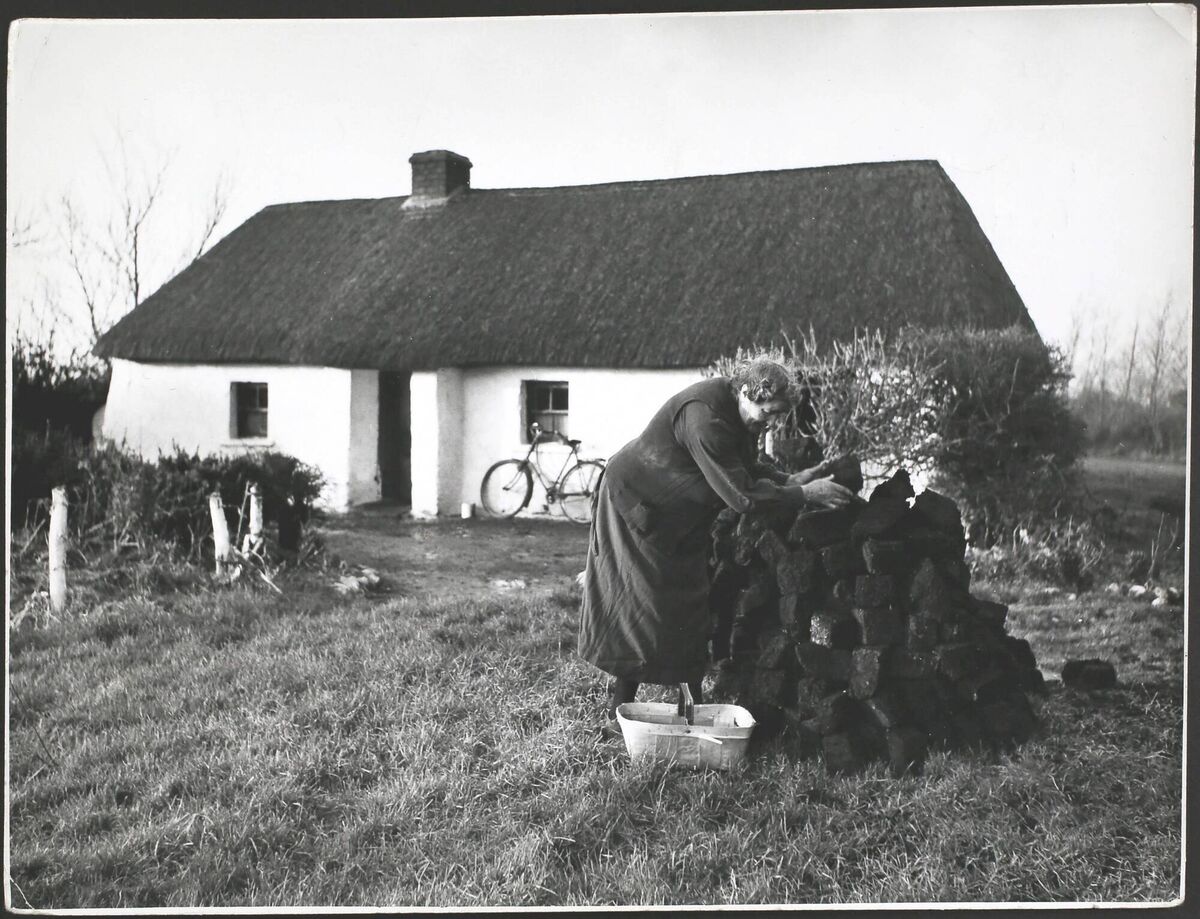
“We will never know,” she says, but what is beyond question is that this site — and in particular its busiest phase in the late Bronze Age, early Iron Age, nearly 3,000 years ago — gives us a singular insight into an ancient rural society that came together to build it.
“These people were experts in woodland management and master wood workers, skilled in sophisticated carpentry and high-quality carving,” Moore explains.
Next week, she will tell a global audience about these people and the exceptional remains they left behind. Isn’t it time we reminded ourselves of the wonder of Irish wetland archaeology at home too?
Edercloon translates as ‘Between the Meadows’ and that is the name of Moore’s new book detailing the discoveries that make Ireland a world leader in peatland archaeology.
It is published just as details are emerging about finds made during work on the N5 Road Project in Roscommon, among them an 8ft wooden idol made from oak, which is estimated to be 1,600 years old.
Both of those sites represent once-in-a-decade discoveries, adding to an incredibly rich record that has given us the Dowris Hoard, with its Bronze Age spearheads, axes and trumpets; the Derrinboy Hoard with its beautifully crafted gold bracelets, hair rings and necklet; and the Faddan More Psalter, an early-medieval Christian prayer book, to mention but a few.
For many years, the great threat to wetland archaeology was the industrialisation of peat extraction, which has destroyed incalculable archaeological wonders. Earlier this month, the Peatlands Gathering Conference heard Ireland’s unique peatland archaeology has been subject to more development intervention and destruction than any other kind of heritage.
It’s estimated that thousands of archaeological sites have been lost to the machines and the power stations. The restoration and rewetting of bogs have already begun, but it has done so without fully considering how to manage our exceptional peatland heritage.
Malcolm Noonan, the Minister of State for Heritage, has acknowledged the challenges and said he hoped to attend Cop26 to hear how best to cultivate a new beginning for peatlands.
During Heritage Week, he also announced €2.2m in funding for the Instar+ archaeological research programme, which will go some way towards helping to, as he put it, “place wetland archaeology, so long at the margins of archaeological discourse in Ireland, centre stage”.
It’s not too late. Just as Cop26 will hear about the “code-red threat to humanity” posed by the climate change emergency, it will also hear there is still time to act.
But, as Benjamin Gearey, lecturer in environmental archaeology at UCC, will tell the Climate Conference in Glasgow next week (and, he hopes, Mr Noonan), this is our last chance to save our peatland heritage.
“Archaeology is a non-renewable resource and so much has been lost to peat cutting; this is the last chance to ensure we preserve the surviving peatland archaeology for future generations,” Dr Gearey will tell the Cop26 session ‘Peatlands: climate change and cultural heritage, global perspectives, solutions and problems’.
He says the session will provide an opportunity for the remarkable archaeological record of Irish peatlands to be showcased on a global stage. Surely it’s time we did more to showcase it at home too. Many decades ago, a campaign aimed at preserving peatland heritage ran under the catchy pun: ‘Don’t turf it out.’ It’s time to revive that slogan.
CLIMATE & SUSTAINABILITY HUB






